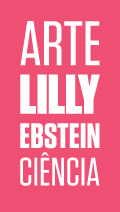Illustration and Photography Department
OF THE SCHOOL OF MEDICINE
-
 Lilly Ebstein | Clique para ver +
Lilly Ebstein | Clique para ver + -
 Alfonso Bovero | Clique para ver +
Alfonso Bovero | Clique para ver + -
 Faculdade de Medicina | Clique para ver +
Faculdade de Medicina | Clique para ver + -
 Odorico Machado de Souza | Clique para ver +
Odorico Machado de Souza | Clique para ver + -
 Técnicas de ilustração científica | Clique para ver +
Técnicas de ilustração científica | Clique para ver + -
 Hospital da Santa Casa de S. Paulo | Clique para ver +
Hospital da Santa Casa de S. Paulo | Clique para ver +
The Illustration and Photography Department was created at the School of Medicine in 1932, in the same year the building on Dr. Arnaldo Avenue was inaugurated.
The Illustration and Photography Department was created at the School of Medicine in 1932, in the same year the building on Dr. Arnaldo Avenue was inaugurated, FMUSP’s current main offices. In just a few years, Lilly consolidated a place of prestige as illustrator and microphotographer at the department and her drawings were regularly published in the Annals of the School of Medicine of São Paulo, the institution’s main scientific publication.
Lilly was hired in 1926 within a context of reorganization of the School, its teaching and research concepts, with a special focus on basic subjects such as Microbiology and Parasitology. It also enhanced the support to the work carried out in the laboratories and practical classes and appreciation of teachers who were also researchers. To some extent, this change was the consequence of agreements made with the Rockefeller Foundation from the United States, “not only regarding the definition of the teaching and research methods implemented there, but also regarding its physical and lab infrastructure. In this period, the school conceived and executed the construction of one of the most modern schools of Medicine at the time with resources and orientation from the Foundation. This presence enabled the School to establish a more effective dialog with international scientific production, while providing the academic community the possibility to redesign its identity and define itself as a leading edge school”, wrote Historian André Mota. [1]
In only five years, from 1926 to 1930, illustrations and photomicrographies by Lilly were published in 22 articles in the Annals of the School of Medicine of São Paulo, in works by professors Alfonso Bovero, Renato Locchi, Carmo Lordy, Luiz Tinoco Cabral, Jarbas Barbosa de Barros, Ernesto de Souza Campos, Floriano Paulo de Almeida, Juvenal Ricardo Meyer, M. Amorim, J. Oria, Cunha Motta, M. Barros Erhart, Paulo Sawaya, Odorico Machado de Souza, H. Cerruti, and Paulo Q. T. Tibiriça. She made illustrations covering a wide range of subjects and areas of knowledge at the School, including Descriptive and Topographic Anatomy, Pathological Anatomy, Parasitology, Microbiology, Embryology, Histology, Surgical Techniques and Medical Surgery.
Lilly’s illustrations are also part of theses presented at the School of Medicine among which those by Heitor Chiarello, Jarbas de Barros, Mauricio Lemos Pereira Lima, Edmundo Vasconcellos, José Oria, Odorico Machado de Souza (for whom she illustrated the Associate Professorship thesis in 1955), Antonio Godoy M. Costa Sobrinho, Ernesto Pereira Lopes, João de Deus Bueno Reis, Clemente Pereira, Reynaldo Neves de Figueiredo, Levant Pires Ferraz, Oswaldo Záccaro, Orlando de Souza Nazareth, Olavo Marcondes Calasans, Paulo Sawaya and Walter Edgard Maffei.
The first two photomicrographies (or microphotographies) published, that we were able to locate, are found in the article “Em Torno de um Caso de Cystodermoma do Ovário” [On a Case of Ovarian Cystadenoma] by José Oria, in 1927, in the Revista de Medicina, of the Oswaldo Cruz Center of the School of Medicine and Surgery of São Paulo, a journal that began to be published in 1916. [2]
[1] Mota, André, Tropeços da Medicina Bandeirante. Medicina Paulista entre 1892 e 1920. S.P, Edusp, p. 70.
[2] Revista de Medicina, do Centro Oswaldo Cruz da Faculdade de Medicina e Cirurgia de S. Paulo, 1927 – 4º trimestre – ano XII - nº 49.
Lilly Ebstein Lowenstein (1897-1966) led a life between science and art, drawing and taking photographs in the fields of Medicine and Zoology. In her work, Lilly combined her technical knowledge of photography and drawing, the study of the sciences and a remarkable talent for aesthetics. She was born in Germany and studied at the Lette-Verein School in Berlin from 1911 to 1914. In 1925, she immigrated with her husband and two children to São Paulo. In 1926, she became an illustrator and photomicrographer at the Illustration and Photography Department at the School of Medicine (USP, as of 1934), which she headed for thirty years after 1932. Lilly collaborated at Instituto Biológico de Defesa Agrícola e Animal (the Biological Institute for the Defense of Agriculture and Animals), from 1930 to 1935, namely in the Avian Pathology Department. A life with art dedicated to the research and dissemination of science.

